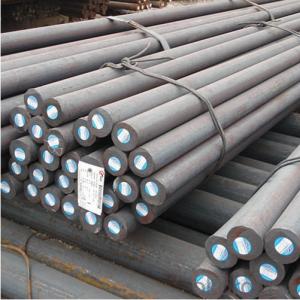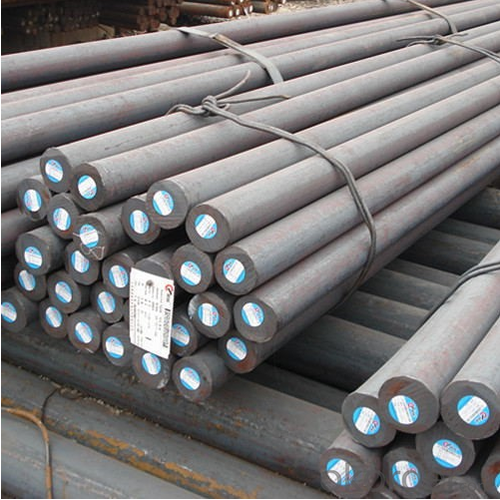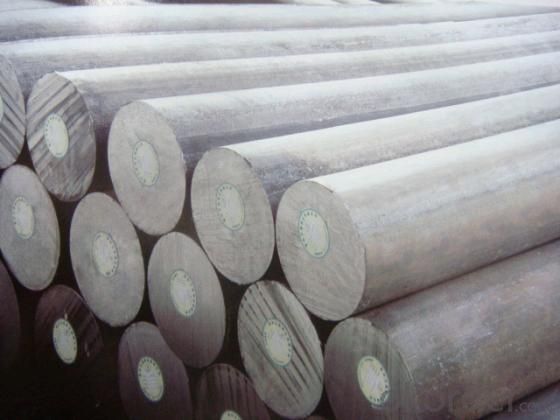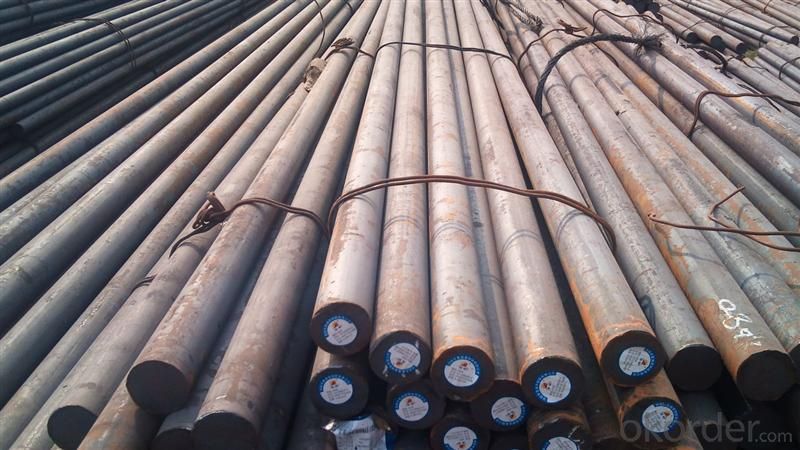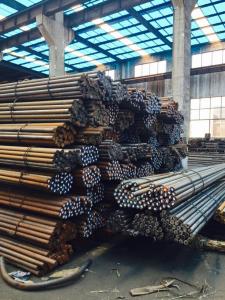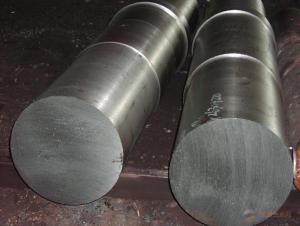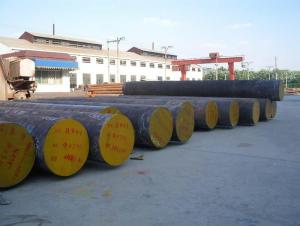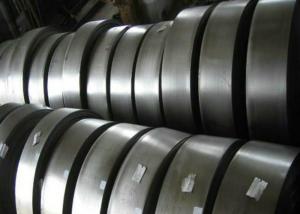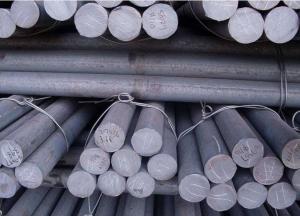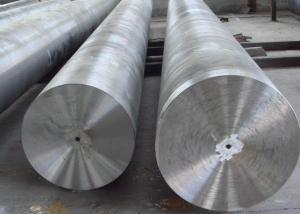30Cr JIS SCr430 DIN1.7030 ASTM 5130
- Loading Port:
- Tianjin
- Payment Terms:
- TT OR LC
- Min Order Qty:
- 25 m.t.
- Supply Capability:
- 50000 m.t./month
OKorder Service Pledge
OKorder Financial Service
You Might Also Like
Specification
30Cr JIS SCr430 DIN1.7030 ASTM 5130
Product Description:
1. Grade: 30Cr JIS SCr430 DIN1.7030 ASTM51300
2. Specification: Dia: 80~800mm Length:2000-13000mm or as required
3. Process: EAF+LF+VD+ Forged+ Heat Treatment (Annealed,A Normalized, Q+T)
4. Machine Capability
Tensile strength (N/mm2Mpa): >=885
Elongation %: >=11
Yield strength: >=685
Hardness: HBS less than 187
Reduction of area:>=45%
5. Inspection: 100% Ultrasonic according to the test standards:SEP1921-84,GR.3 CLASS C/C or by SGS ,AHK or Alex Stewart
6. Packing situation: standard seaworthy packing or as customer required
7. Delivery time: 45 days after order confirmed
8. Payment: T/T or L/C at sight.
Chemical Compositon:
C | Si | Mn | Cr | Ni | Cu |
Equal or less than | |||||
0.27-0.34 | 0.17-0.37 | 0.50-0.80 | 0.80-1.10 | 0.30 | 0.30 |
Application:
(1) Generally used for producing the important parts with high strength and good plastic.
(2) After nitrogen treatment, used for producing the important parts with special performance
requirements, such as shafts, gears, fasteners, bolt of large dia steamer etc.
Advantage:
1, Fast response in reply
2, Good communication sales with reasonable price.
3,Good quality materials.
4,Fast lead time.
5,Rich experience in export business.
6,Well after sales service.
Product Show:
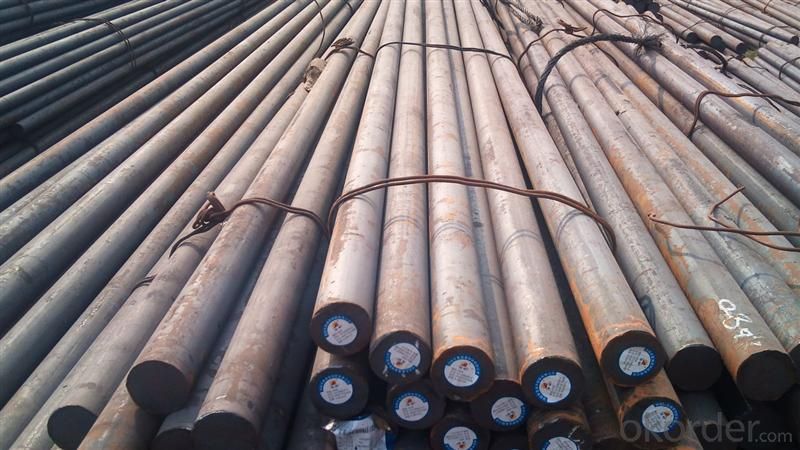
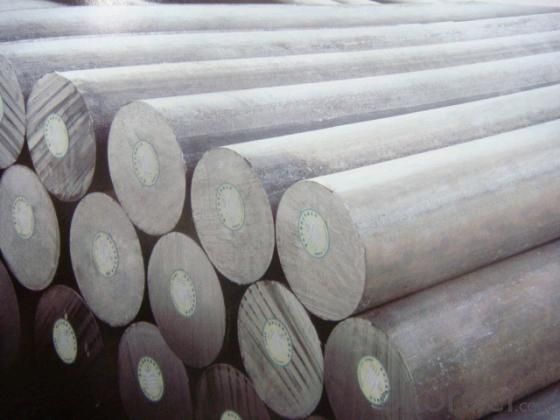

- Q: What are the requirements for special steel used in low-temperature applications?
- The requirements for special steel used in low-temperature applications include high toughness, excellent resistance to brittle fracture, and good ductility at low temperatures. It should have a low carbon content to prevent embrittlement, along with specific alloying elements like nickel, manganese, and chromium to enhance its low-temperature properties. Additionally, the steel should have good weldability and corrosion resistance to withstand the harsh conditions often encountered in low-temperature environments.
- Q: How is special steel heat treated?
- Special steel is heat treated using a combination of heating and cooling processes to enhance its mechanical properties. This typically involves heating the steel to a specific temperature and holding it there for a designated period of time, followed by rapid cooling or quenching. The heat treatment process can vary depending on the desired outcome, such as improving hardness, strength, or toughness, and may also involve additional steps like tempering or annealing.
- Q: How does special steel contribute to the chemical industry?
- Special steel plays a crucial role in the chemical industry by offering exceptional corrosion resistance and high temperature resistance properties. It is used to manufacture various equipment such as storage tanks, pipelines, valves, and reactors, which are essential for handling corrosive chemicals and operating under extreme conditions. Special steel ensures the integrity and safety of these structures, preventing leaks and maintaining product quality, thus enabling efficient and reliable chemical processes.
- Q: What are the factors that affect the wear resistance of special steel?
- The factors that affect the wear resistance of special steel include the composition of the steel, the hardness of the steel, the presence of carbides or other strengthening elements, the microstructure of the steel, the presence of surface treatments or coatings, the contact load or pressure applied to the steel, the sliding speed or velocity of the contact, the temperature at which the steel is operating, and the presence of any abrasive or corrosive media.
- Q: What are the advantages of using special steel in the renewable energy sector?
- Using special steel in the renewable energy sector offers several advantages. Firstly, special steel provides exceptional strength and durability, making it ideal for constructing large-scale renewable energy infrastructure such as wind turbines and solar panel frameworks. This ensures the longevity and reliability of these structures, even in harsh environmental conditions. Secondly, special steel has excellent corrosion resistance, which is crucial in renewable energy projects located near coastal areas or in offshore installations. It helps to protect the equipment from the corrosive effects of saltwater, extending the lifespan of the components and reducing maintenance costs. Additionally, special steel offers excellent heat resistance properties, making it suitable for concentrated solar power systems or thermal energy storage devices. It can withstand high temperatures without deformation or loss of strength, ensuring safe and efficient operation in these applications. Overall, the use of special steel in the renewable energy sector provides enhanced structural integrity, corrosion resistance, and heat resistance, contributing to the long-term reliability and performance of renewable energy infrastructure.
- Q: What are the different chemical resistance grades of special steel?
- Special steels, often referred to as stainless steels, are known for their excellent resistance to corrosion and chemical attack. They are a group of alloys that contain a high proportion of chromium, which forms a protective oxide layer on the surface, preventing further corrosion. The resistance of special steel to various chemicals can vary depending on the specific grade or alloy composition. Here are some of the common chemical resistance grades of special steel: 1. Austenitic Stainless Steel: This is the most common type of stainless steel and offers excellent resistance to a wide range of chemicals, including organic acids, alkalis, and salts. The most widely used grade within this group is 304 stainless steel. 2. Ferritic Stainless Steel: Ferritic stainless steels have lower corrosion resistance compared to austenitic grades but still offer good resistance to many chemicals. They are particularly resistant to nitric acid and some organic acids. Grade 430 stainless steel is a common example of ferritic stainless steel. 3. Martensitic Stainless Steel: Martensitic stainless steels are known for their high strength and hardness. While they have lower corrosion resistance compared to austenitic and ferritic grades, they can still exhibit good resistance to certain chemicals, especially in mildly corrosive environments. 4. Duplex Stainless Steel: This type of stainless steel combines the properties of both austenitic and ferritic grades, providing enhanced strength and improved resistance to stress corrosion cracking. Duplex stainless steels offer excellent resistance to a wide range of chemicals, including organic acids, chloride-containing solutions, and saltwater. 5. Precipitation-Hardening Stainless Steel: These steels can be heat-treated to achieve high strength and corrosion resistance. They are typically resistant to a wide range of chemicals, including organic acids, alkalis, and some organic solvents. It's important to note that the chemical resistance of any steel grade can also be influenced by factors such as temperature, concentration of the chemical, and the presence of other corrosive agents. Therefore, it is advisable to consult the manufacturer's specifications or seek expert advice when selecting a special steel grade for specific chemical resistance requirements.
- Q: What are the unique properties of stainless steel?
- Stainless steel has several unique properties that make it highly desirable in various applications. Firstly, it has excellent corrosion resistance, making it resistant to rust and staining, even in harsh environments. Additionally, stainless steel is durable and can withstand high temperatures, making it suitable for use in extreme conditions. It also has a high strength-to-weight ratio, making it strong yet lightweight. Moreover, stainless steel is hygienic and easy to clean, making it ideal for use in food processing and medical equipment. Lastly, stainless steel has an attractive appearance and can be easily fabricated into different shapes, making it a versatile material for various industries.
- Q: What are the common grades of special steel?
- The specific application and desired properties determine the varying common grades of special steel. Some frequently utilized grades are: 1. Stainless steel, an alloy resistant to corrosion containing a minimum of 10.5% chromium. Grades like 304, 316, and 410 possess exceptional corrosion resistance, high strength, and good formability, making them prevalent in various industries. 2. Tool steel, specifically designed for toolmaking, renowned for its high hardness, wear resistance, and toughness. Common grades such as D2, A2, O1, and S7 possess specific properties suitable for diverse applications. 3. High-speed steel (HSS), a type of tool steel retaining its hardness and cutting ability even at high temperatures. It frequently finds use in cutting tools like drills, end mills, and taps. M2, M35, and M42 are a few well-known HSS grades. 4. Alloy steel, made by incorporating different alloying elements to enhance specific properties. Grades like 4140, 4340, and 8620, known for their high strength, toughness, and wear resistance, are commonly utilized in industries such as automotive, aerospace, and machinery. 5. Spring steel, renowned for its ability to restore its original shape after bending or twisting. Grades like 1095 and 5160 are commonly employed in the manufacturing of springs, suspension components, and hand tools. These examples merely scratch the surface of the numerous available grades of special steel, each possessing unique properties and applications. It is vital to select the appropriate grade based on the specific requirements of the intended usage.
- Q: What are the different methods of improving the strength of special steel?
- There exist various approaches that can be utilized to enhance the strength of special steel. One prevalent technique involves the process of alloying. By incorporating specific elements like manganese, chromium, or vanadium into the steel, its strength and hardness can be significantly augmented. These alloying elements form robust and stable compounds with the steel, thereby enhancing its overall strength. Another method entails heat treatment. This process entails subjecting the steel to controlled heating and cooling processes in order to modify its microstructure. For instance, quenching and tempering can be employed to increase the strength and hardness of the steel by creating a hardened martensitic structure. Additionally, precipitation hardening is a heat treatment technique that involves the formation of fine particles within the steel matrix, resulting in improved strength. Cold working is also a widely utilized technique for strengthening special steel. By subjecting the steel to plastic deformation at low temperatures, its grain structure becomes elongated, and dislocations are introduced. This leads to an increase in the strength and hardness of the steel. Furthermore, surface treatments can be implemented to enhance the strength of special steel. For instance, carburizing or nitriding can be utilized to introduce carbon or nitrogen into the surface layer of the steel, resulting in the formation of a hard and wear-resistant surface. Moreover, advancements in metallurgical technology have introduced techniques such as powder metallurgy and rapid solidification. These methods involve the production of steel with fine and homogeneous microstructures, leading to improved strength and performance. In summary, the methods for improving the strength of special steel encompass alloying, heat treatment, cold working, surface treatments, and advanced metallurgical technologies. These techniques can be customized to meet specific requirements, enabling the production of high-strength and high-performance steel for various applications.
- Q: How does nitriding steel improve hardness and wear resistance?
- Nitriding steel improves hardness and wear resistance by introducing nitrogen into the surface of the material. This process forms nitrides, which are hard compounds that increase the surface hardness of the steel. Additionally, the nitrides create a protective layer that enhances the material's resistance to wear, erosion, and corrosion.
Send your message to us
30Cr JIS SCr430 DIN1.7030 ASTM 5130
- Loading Port:
- Tianjin
- Payment Terms:
- TT OR LC
- Min Order Qty:
- 25 m.t.
- Supply Capability:
- 50000 m.t./month
OKorder Service Pledge
OKorder Financial Service
Similar products
Hot products
Hot Searches
Related keywords
